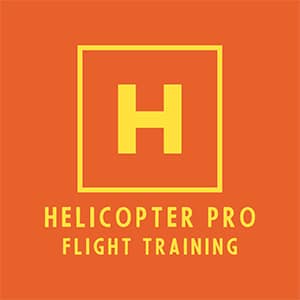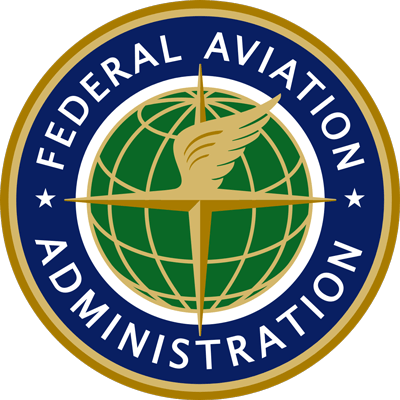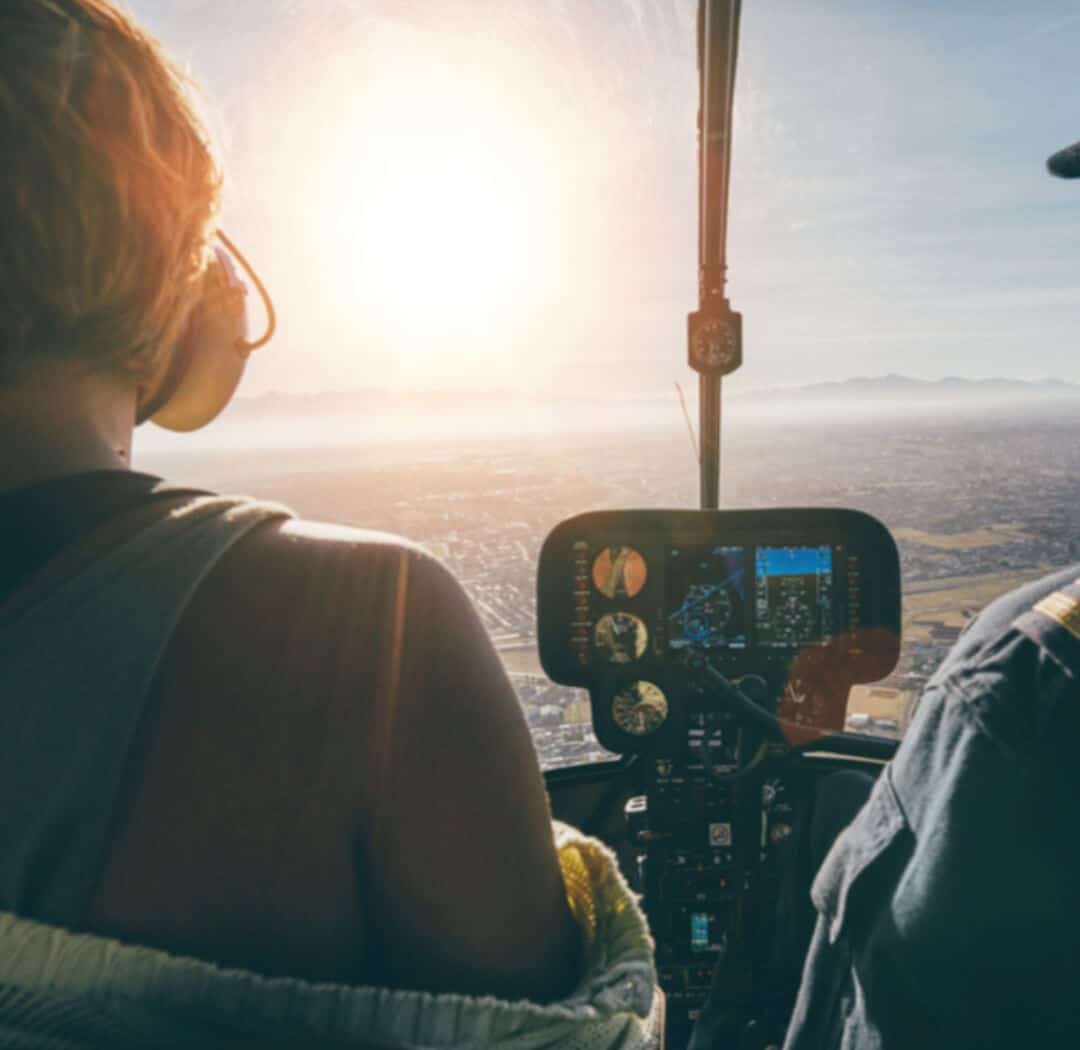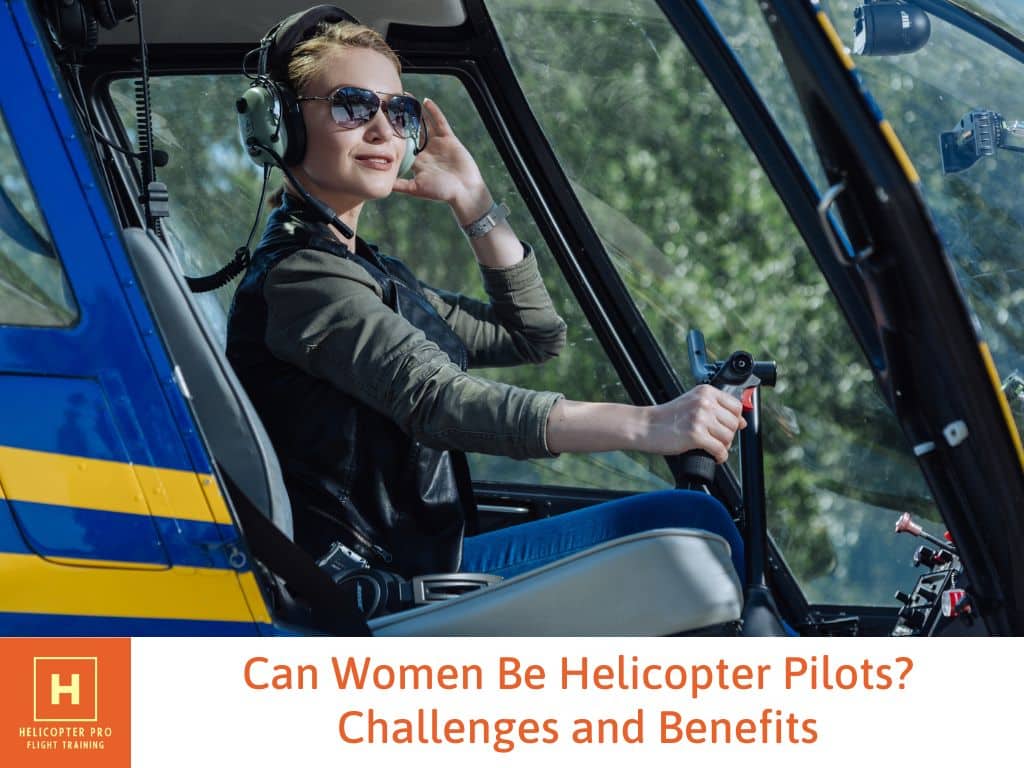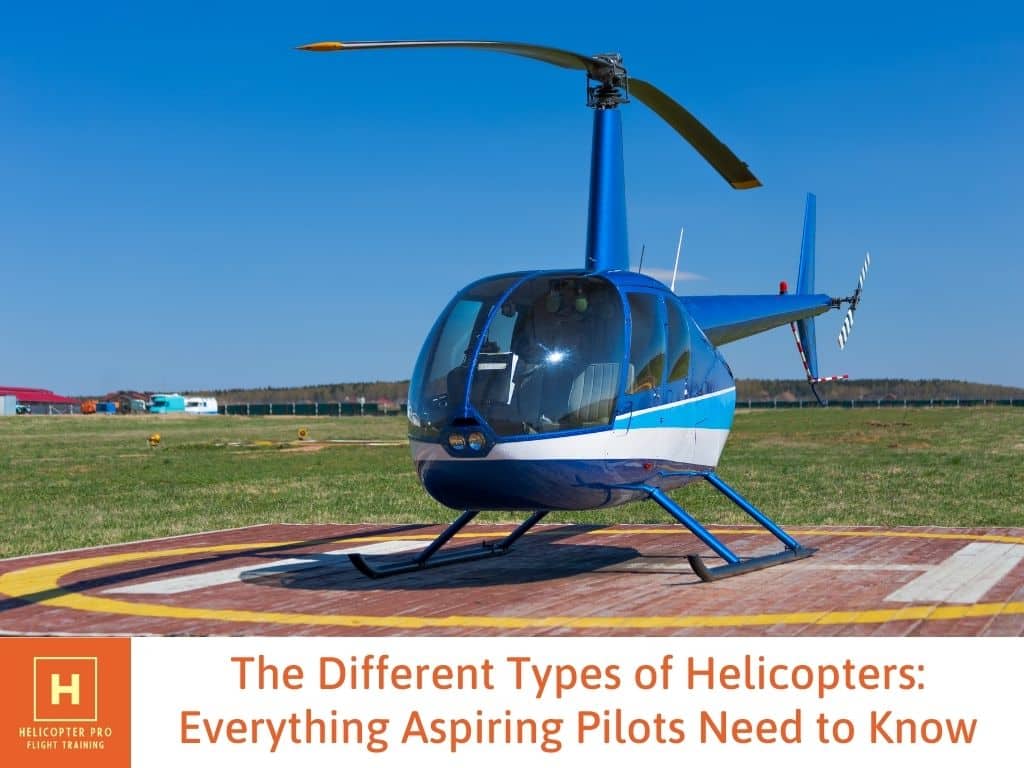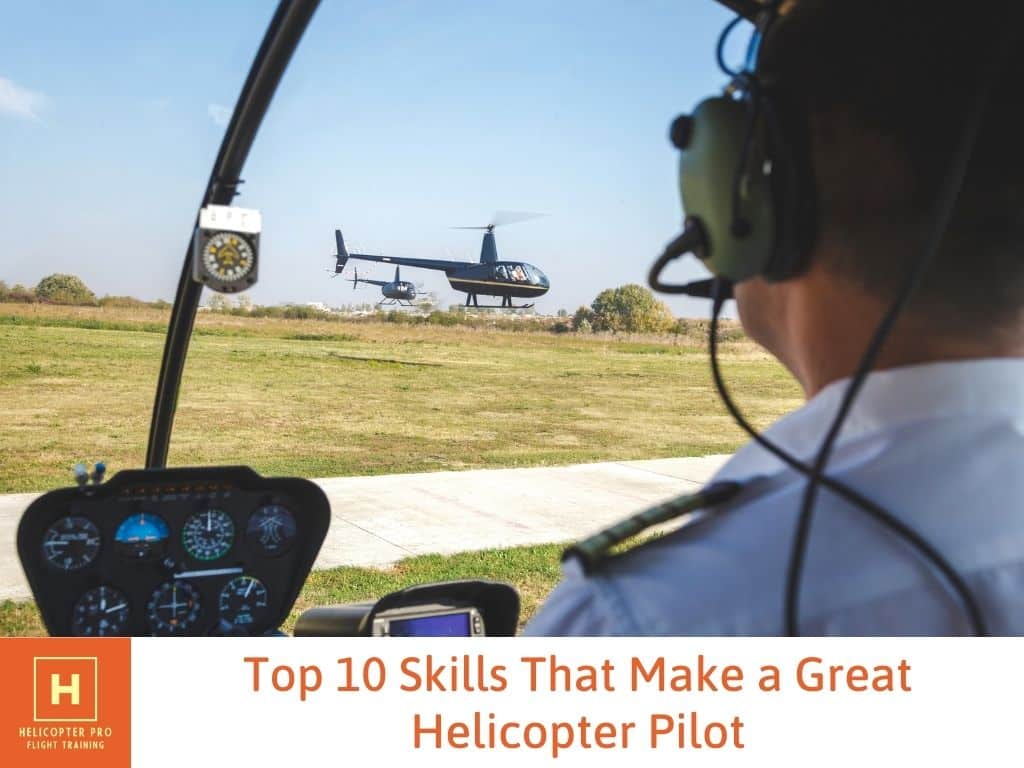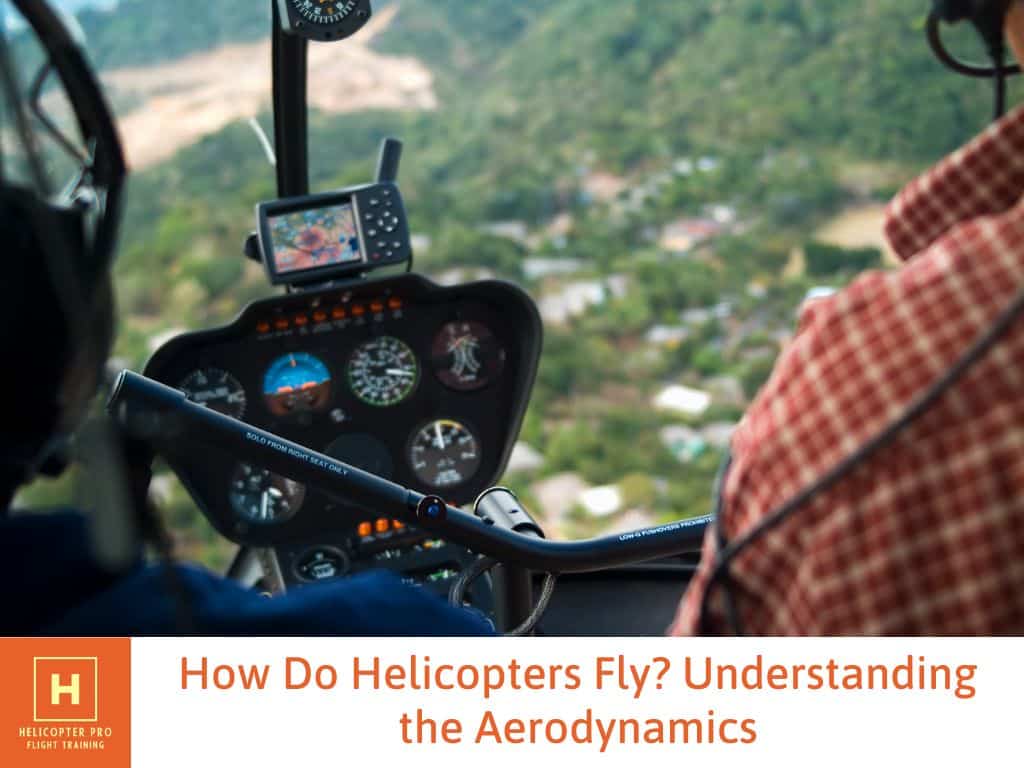
When it comes to aircraft, helicopters are in a league of their own.
Unlike airplanes, which require a runway to take off and land, helicopters possess the extraordinary ability to do both vertically. This capability helps helicopters operate in environments that are inaccessible to airplanes, such as dense urban areas, mountainous terrain, or even ships at sea.
Learning to fly a helicopter is a highly rewarding experience that opens up a world of career and leisure possibilities. But how do these fascinating machines defy gravity and navigate the skies?
Let’s take a closer look at how helicopters fly. In this article, we’ll delve into the aerodynamics of helicopter flight to help you understand how these aircraft work.
The Basic Principles of Helicopter Flight
Unlike airplanes, which are categorized as fixed-wing aircraft, helicopters fall under the classification of rotary-wing aircraft. This distinction means that helicopters generate lift much differently than airplanes.
A helicopter’s rotor blades are what give it the ability to fly, serving the same function as the wings on an airplane. These blades are designed to create lift, a force that counteracts gravity and ultimately allows the helicopter to rise off the ground. Airplanes generate lift by speeding down the runway, which forces air over the wings.
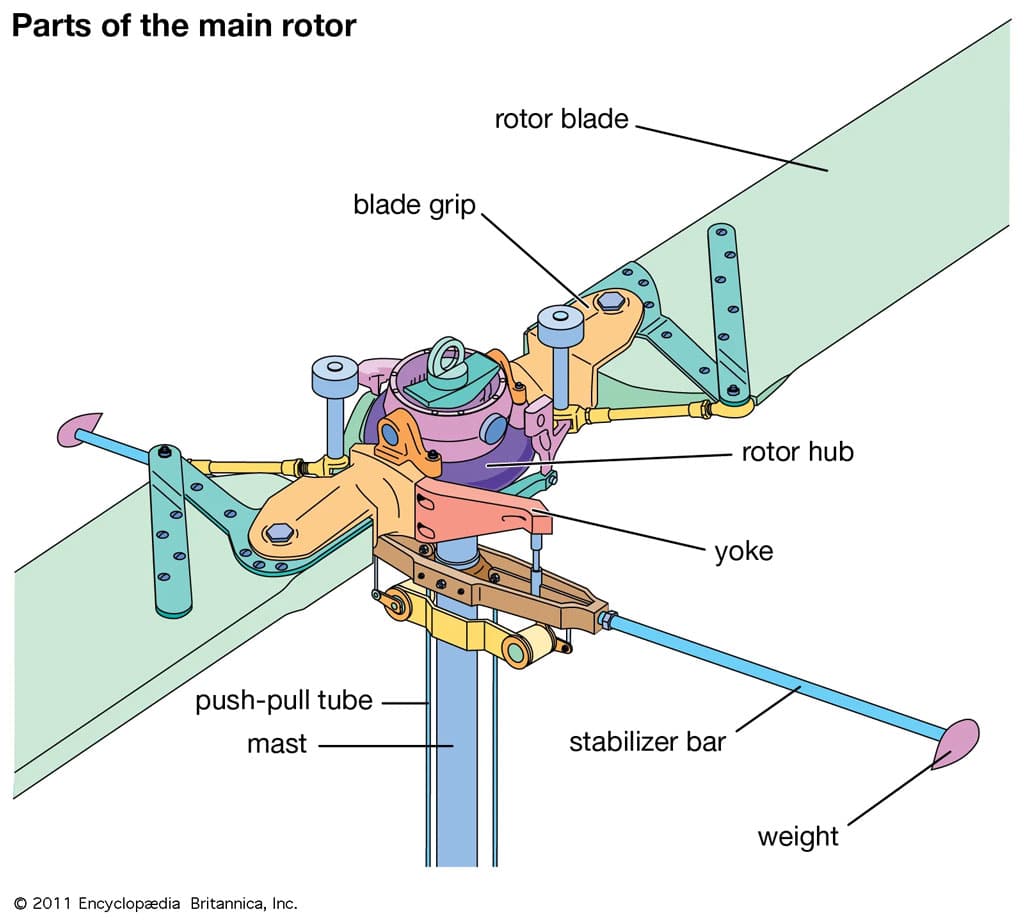
Rotor blades generate a similar amount of lift without the need for a runway. The rotor blades are connected to a central mast, which is powered by an engine-driven transmission. This transmission spins the mast and rotor blades at a very rapid pace.
Spinning at high speeds creates a pressure differential, with low pressure above the blade and high pressure below it. This pressure difference is ultimately what generates lift, forcing the helicopter up in the air. The pilot controls the amount of lift by altering the pitch of the rotor blades and changing their angle, which moves the helicopter up and down.
In order to fly, helicopters also need to generate thrust. Airplanes use jet or propeller engines to do this, but helicopters rely on their rotor system for both thrust and lift.
While flying, the pilot tilts the rotor disc in the direction they need to travel. This allows them to move the helicopter forward, backward, or sideways. Tilting the blades changes the direction of the lift force, moving this force in the opposite direction of the intended motion. This ultimately generates thrust.
To the average observer, it may seem like helicopters are just floating in the air. However, these basic principles of aerodynamics help us understand how helicopters move. These aerodynamic principles also illustrate why helicopters are so versatile, as they can hover in place or even operate in confined spaces.
Controlling the Helicopter in Flight
Helicopters have an unparalleled level of agility and maneuverability compared to other aircraft. This is why they are often used for emergency rescues and military operations where an airplane would be too large.
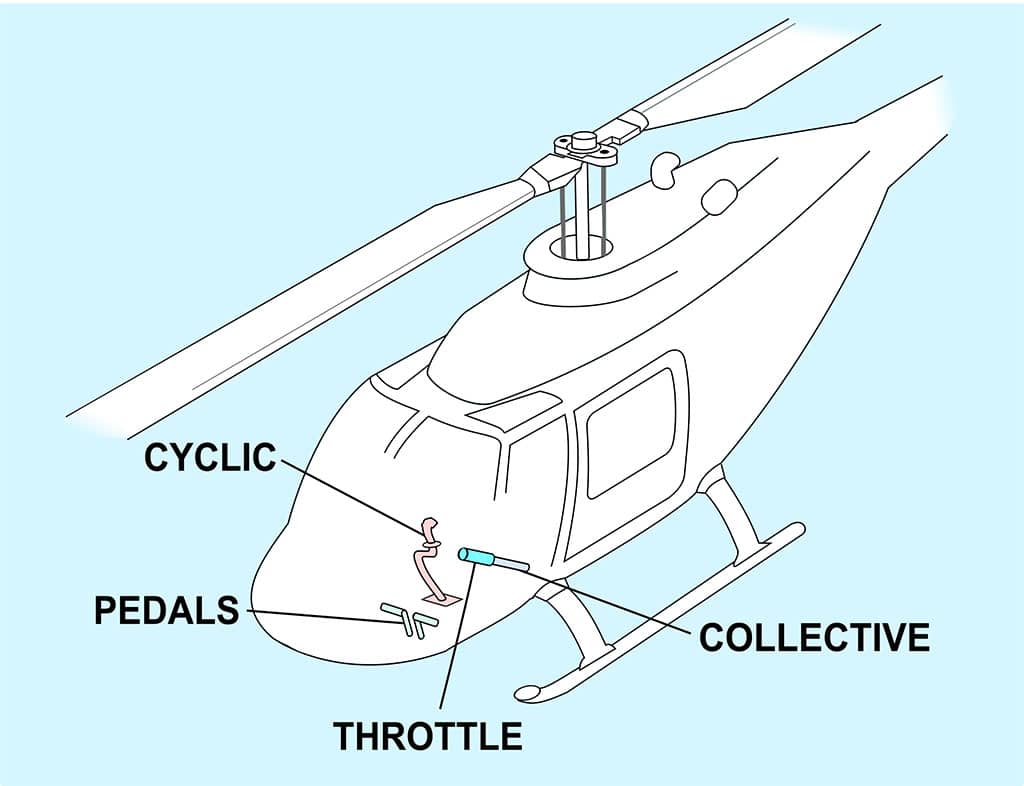
Helicopters are highly adaptable because the pilot has the ability to vary the pitch of the rotor blades while flying. Pitch refers to the angle of the rotor blades relative to the airflow around them.
There are two main controls in the cockpit that adjust the helicopter’s pitch and control its movements:
(1) The Collective Control
As the name implies, the collective control adjusts the pitch of all rotor blades simultaneously. This control is located to the left of the pilot’s seat and functions like a lever. It changes the total amount of lift the rotor system produces when adjusted.
Lifting the collective control increases the pitch of the blades, which creates more lift and causes the helicopter to rise. Alternatively, lowering the collective control reduces lift and causes the helicopter to descend. Skilled pilots will use collective control to hover when necessary, making small adjustments to counteract the force of gravity.
(2) The Cyclic Control
While the collective control handles the helicopter’s vertical movement, the cyclic control handles the helicopter’s direction in the air. This control is located between the pilot’s knees and resembles a joystick. Pilots move the joystick to tilt the rotor disc in their desired direction.
Tilting the rotor disc changes the orientation of the helicopter’s lift vector. This redirects some of the lift force and generates thrust in a specific direction, which propels the helicopter.
Coordinating the Controls
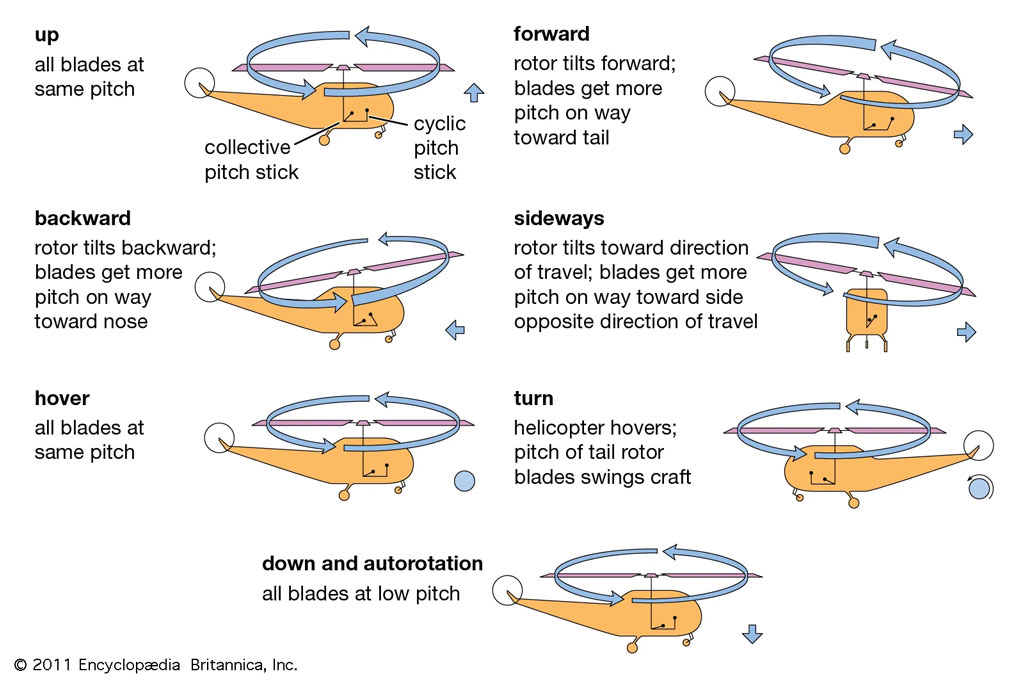
In order to become a helicopter pilot, you’ll need to learn how to use the collective and cyclic controls together. This is a skill that requires excellent spatial awareness, quick reflexes, and a deep understanding of aerodynamics.
Using these two controls together allows pilots to perform an impressive array of maneuvers. Unlike airplanes, helicopters are able to hover, move backward and sideways, and navigate through tight spaces.
Other Aerodynamic Effects
Lift and thrust are the most important components of helicopter flight, but they are far from the only aerodynamic factors at play. Here are some of the other forces that affect the way helicopters fly:
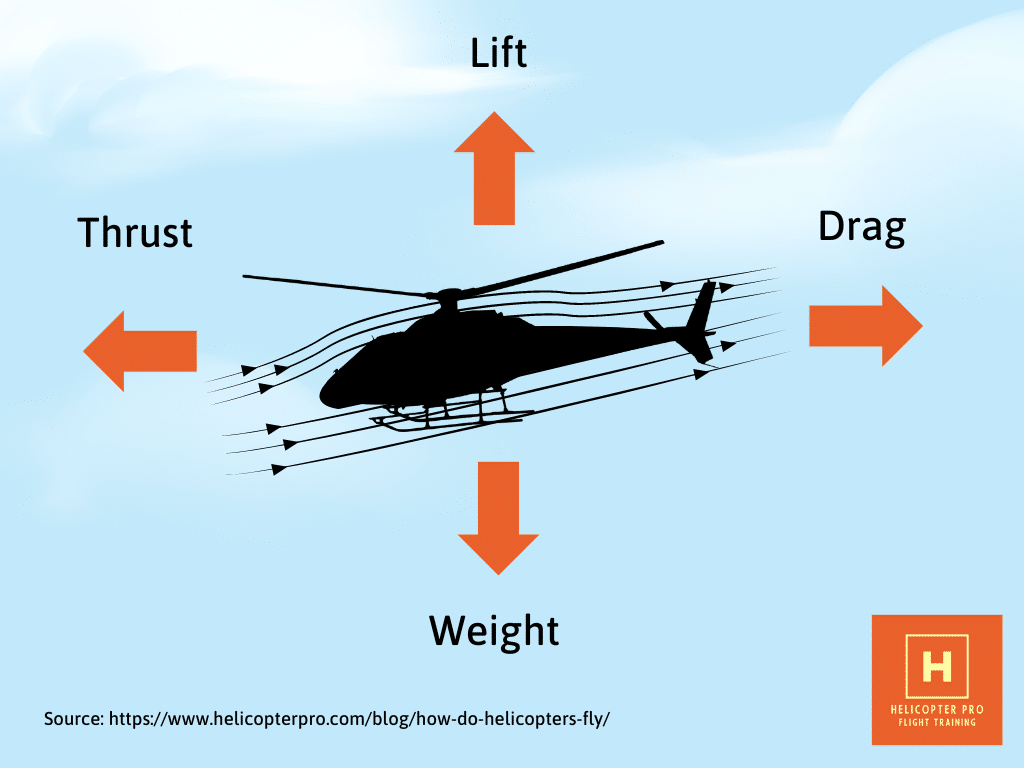
Drag
Drag is the aerodynamic resistance that acts opposite to the direction of the helicopter’s motion. Helicopters encounter two types of drag: parasitic and induced drag.
Parasitic drag is resistance from parts of the helicopter that don’t contribute to lift, such as the fuselage and the landing gear. Induced drag is resistance from the air vortices created by the rotor blades as they spin.
Pilots should always account for drag when planning flights and calculating power requirements. This is particularly important during high-speed travel.
Torque
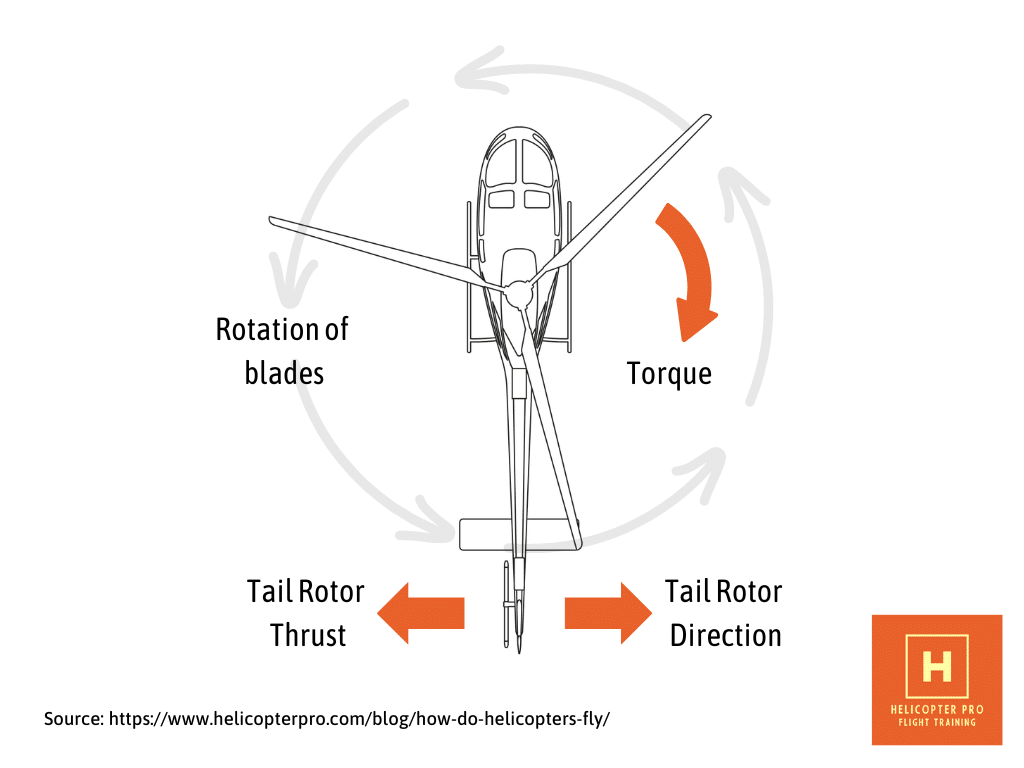
You might have learned about Newton’s third law in high school physics class, and helicopter torque puts this physics principle in action. Since every action has an equal and opposite reaction, when the rotor blades of the helicopter spin, they create an opposing force that attempts to spin the helicopter in the opposite direction.
To counteract this force and keep the vehicle stable, most helicopters have a tail rotor. The tail rotor generates sideways thrust to balance out the torque.
Ground Effect
Ground effect is a phenomenon that happens when helicopters hover close to the ground. Because the helicopter is so close to the ground, there isn’t much downward airflow. This naturally increases the air pressure under the rotor, creating more lift.
This additional lift helps the helicopter operate more efficiently and minimize power consumption. Pilots often use the ground effect to their advantage when lifting heavy cargo.
Vortex Ring State
Vortex ring state is a very dangerous phenomenon that pilots should always be aware of in the air. It is a dangerous condition that happens when the helicopter descends into its own downwash. This results in highly turbulent vortices that can throw the helicopter off balance, reduce lift, and even lead to a crash if not properly managed.
These factors are extremely important for prospective helicopter pilots to learn about and consider while flying, as they affect both flight stability and fuel efficiency.
How to Hover a Helicopter
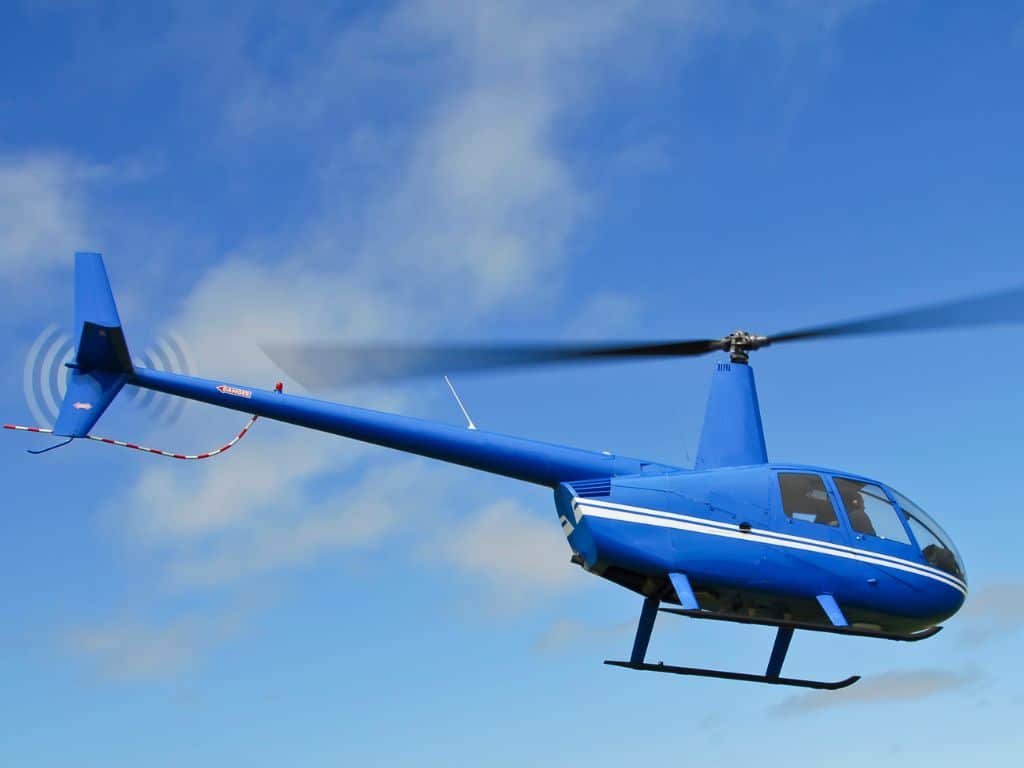
Hovering is one of the most useful maneuvers that a helicopter performs. The ability to hover is also what sets helicopters apart from other aircraft.
While it may look simple from the ground, maintaining a stable hover requires the pilot to have a deep understanding of helicopter aerodynamics and precisely balance the two main controls.
Here’s a look at how pilots keep helicopters in this fixed position:
Balancing Collective and Cyclic Controls
The first step to hovering is using the collective control to generate sufficient lift to leave the ground. As you lift the collective control, the pitch of the rotor blades increases, generating enough lift to take off. Once airborne, the pilot must make small adjustments to the collective control to maintain altitude and counterbalance the pull of gravity.
The pilot will also need to manage the cyclic controls to orient the helicopter. Even in a stable hover, air currents and other factors will try to push the helicopter out of its position. By making small adjustments to the cyclic controls, pilots can counteract these forces to keep the helicopter horizontally and vertically stationary.
Engine Power and Rotor RPM
Successful hovering uses a large amount of engine power. This is because the helicopter needs to generate enough lift to stay in the air, but it doesn’t have the benefit of forward motion to reduce drag.
Keeping your rotor’s revolutions per minute (RPM) steady is crucial. Fluctuations in rotor speed can change the amount of lift the helicopter gets, which makes it hard to hover stably. Luckily, most modern helicopters come with a governor that helps maintain a consistent rotor RPM.
Awareness and Coordination
Hovering requires the pilot to maintain a heightened state of awareness. One of the best ways to maintain your orientation while hovering is to focus on a fixed point in the distance.
You’ll also need to pay constant attention to wind direction, as a change in the wind could cause the helicopter to drift or change altitude. You’ll also need to consistently make adjustments to the helicopter’s controls – even a small lapse in attention can cause serious issues in the air.
Practice Makes Perfect
For new pilots, hovering might feel extremely intimidating. If this maneuver isn’t executed precisely, there’s a risk of drifting uncontrollably or even descending rapidly. However, like any skill, practice makes perfect.
Working with qualified instructors is the best way to learn how to use the controls efficiently, improve your response times, and ultimately master your hovering technique.
Learn to Fly With Helicopter Pro Flight Training
Helicopters are truly marvels of engineering that serve a unique purpose in the world of aerospace. In order to fly safely, pilots need to understand the science and physics behind these vehicles and know exactly why and how they fly.
Helicopter Pro Flight Training is here to guide you on your journey to becoming a helicopter pilot. We offer training for private and commercial helicopter pilots in beautiful Sarasota, Florida.
Get in touch today to learn more about our services and sign up for our training programs.
Image sources:
